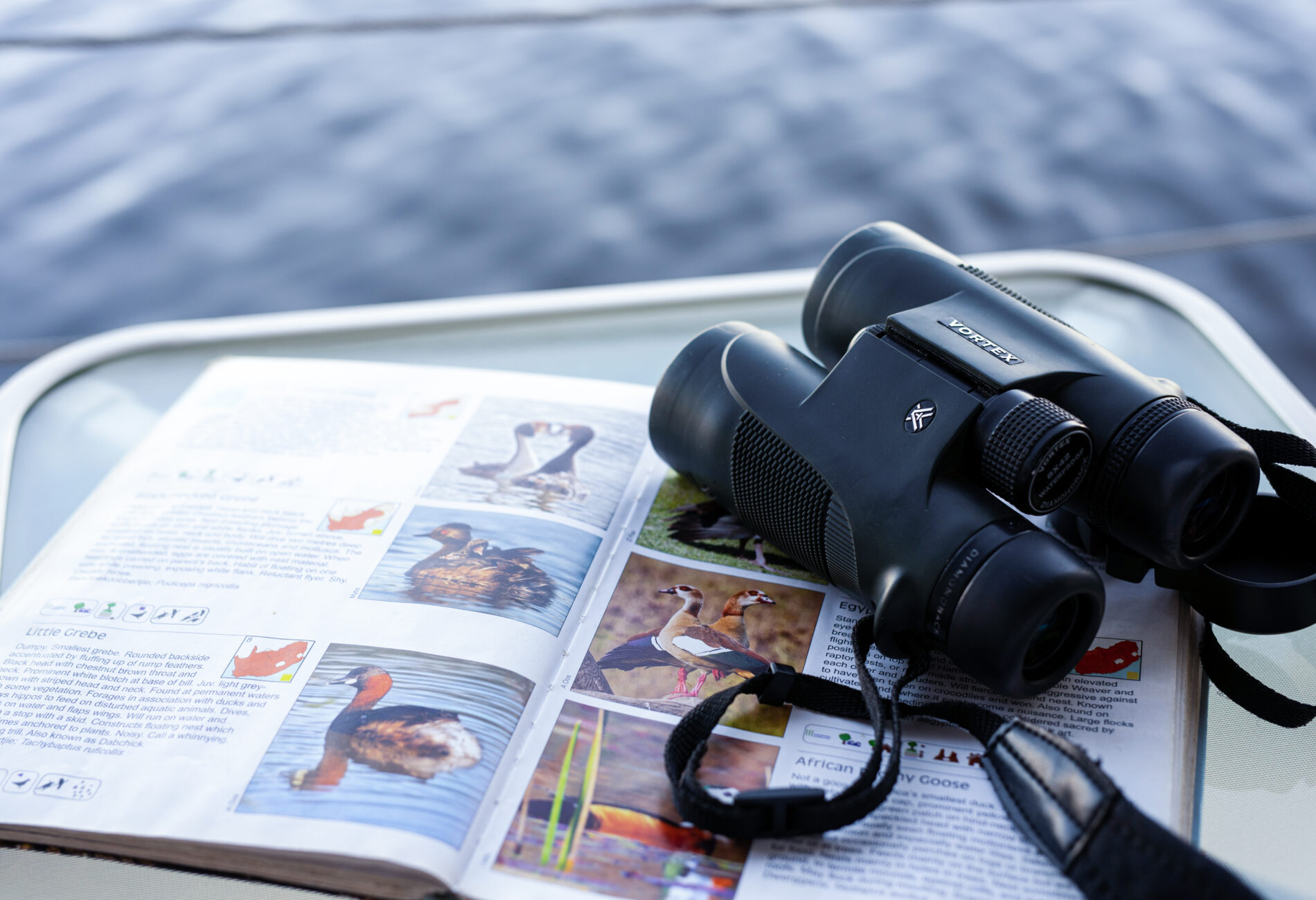25 August 2023
birding
Situated in the wilderness region known as the Caprivi Strip (part of the renowned KAZA region) at the confluence of the Chobe and Zambezi rivers, where Botswana, Namibia, Zimbabwe, and Zambia meet, the Chobe National Park gives visitors an unrivalled, one-of-a-kind safari experience. The area’s diverse landscape provides magnificent game viewing, especially of Africa’s Big Five. However, big game is one of many reasons to visit the region and enjoy a safari to Botswana and surrounds.
The Chobe River, forming the park’s northern border, is a paradise for serious (and less-so) birdwatchers. If you’re a keen birder seeking an unforgettable birding holiday, the Zambezi Queen Collection invites you to embark on a Chobe birding safari. The Chobe River area draws in an incredible array of avian species throughout the year, from magnificent birds of prey to stunning waterfowl and colourful songbirds.
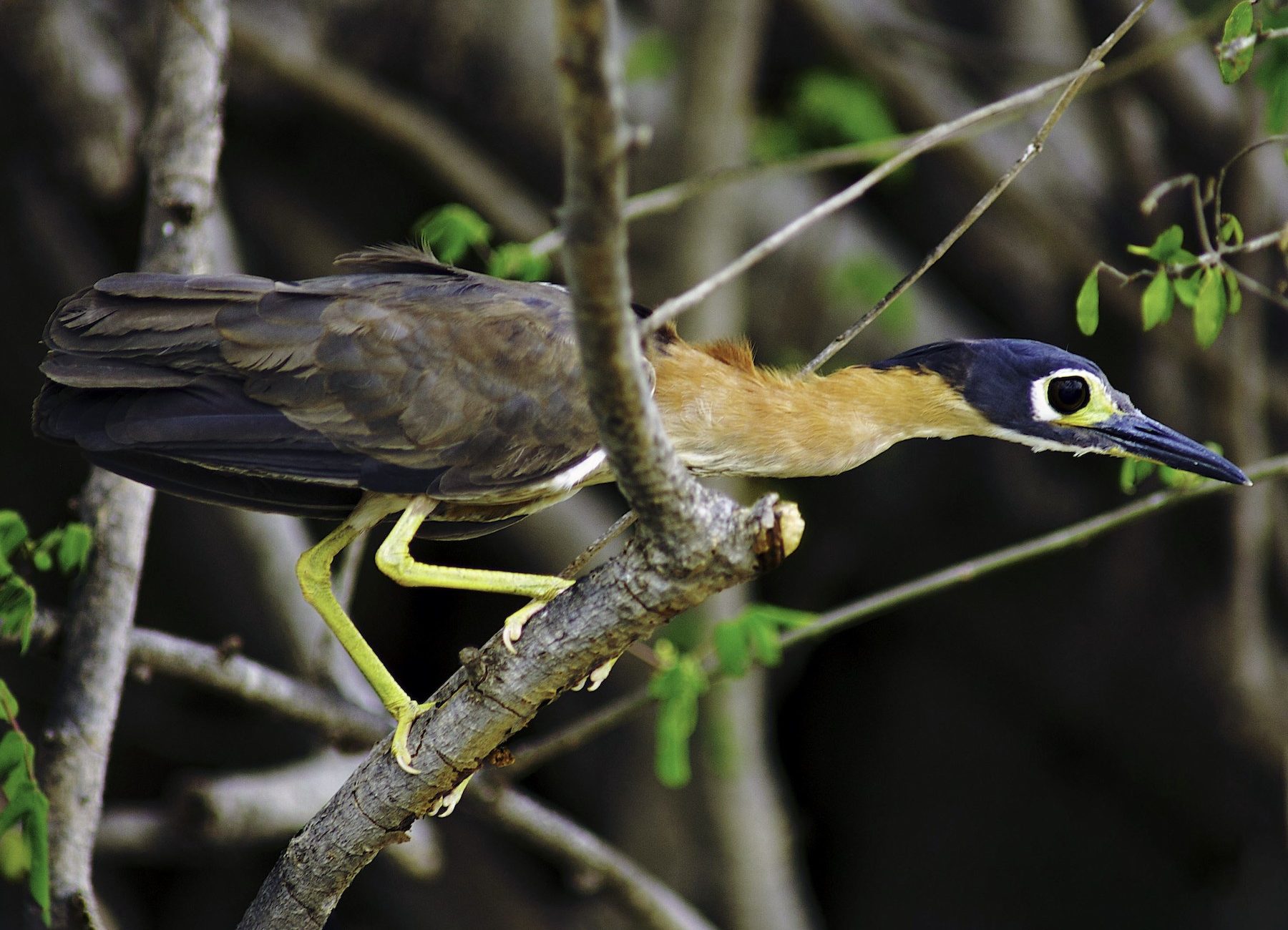
In the serene landscapes of Chobe National Park, the White-backed Night Heron emerges as a striking sight among the dense foliage along the riverbanks. This elusive nocturnal hunter showcases its ghostly white plumage and contrasting black markings, skillfully blending into the shadows during the day. As the sun sets over the horizon, keen-eyed visitors might spot this heron gracefully gliding through the dusky waters in search of its prey, adding an air of mystique to the park’s twilight ambience.
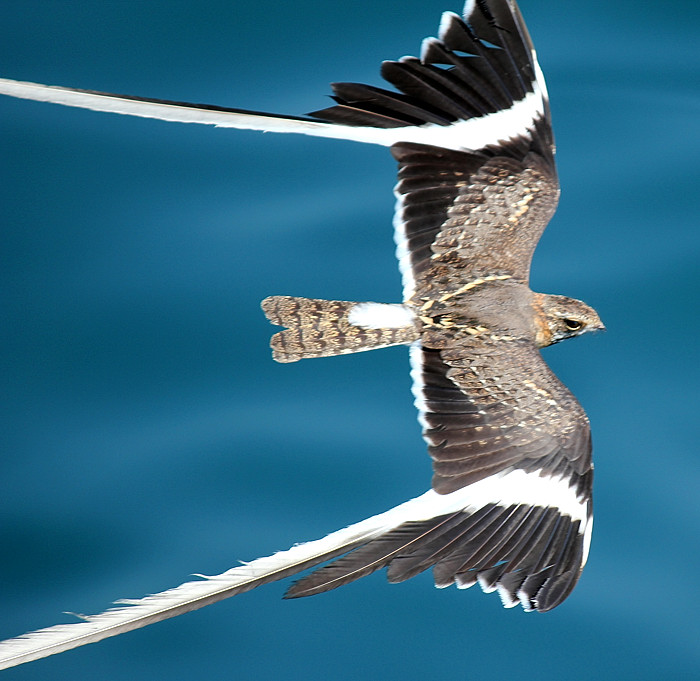
As the Chobe National Park transitions from daylight to night, the Pennant-winged Nightjar takes centre stage, captivating onlookers with its aerial acrobatics. With its broad wings adorned by distinctive pennant-like feathers, this elegant nightjar mesmerizes observers as it executes its graceful flights, gliding effortlessly through the darkening skies. Its rhythmic calls fill the air, creating a harmonious symphony of nature, and its enigmatic presence adds to the allure of Chobe’s nocturnal wonders.
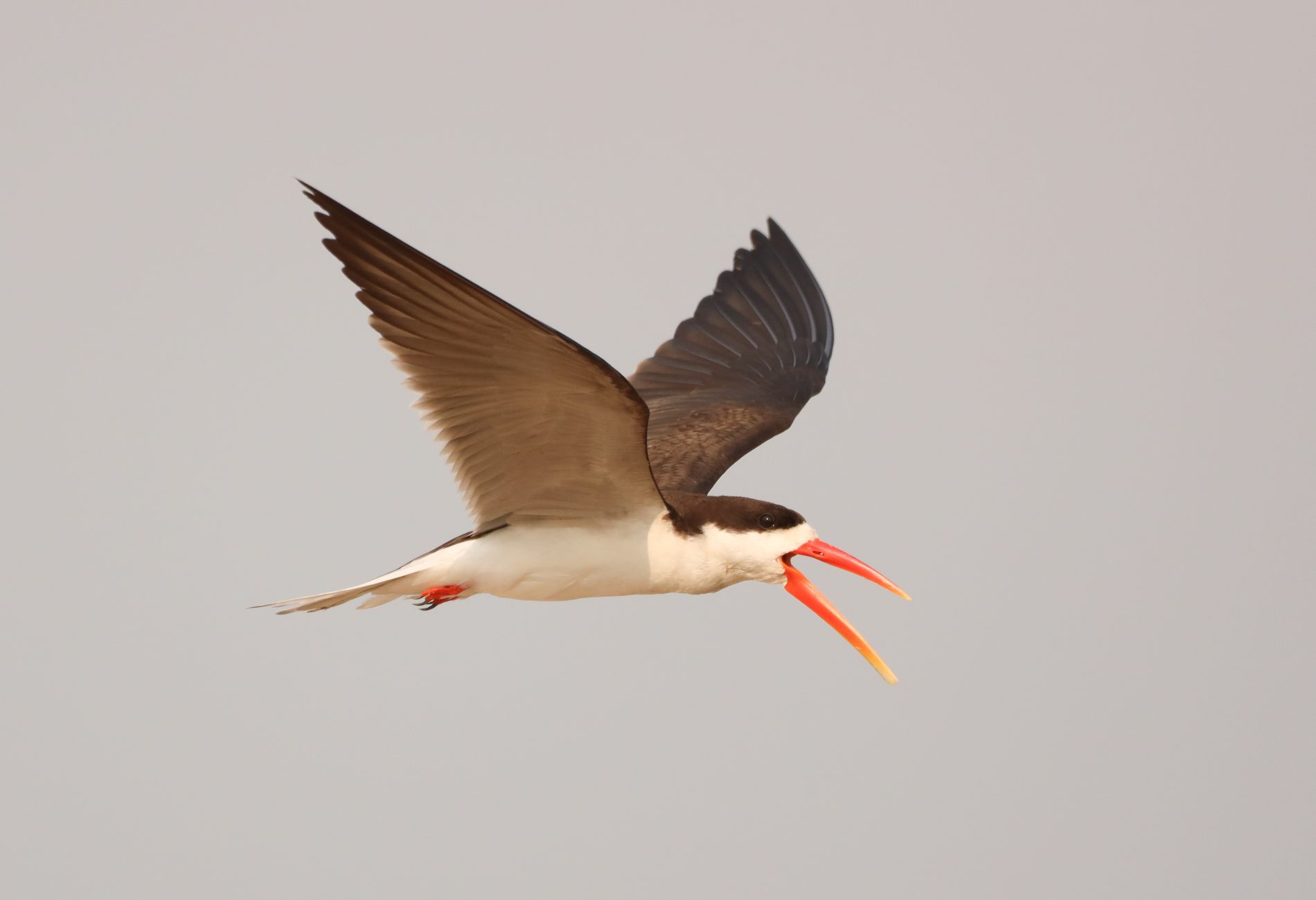
A master of aerial acrobatics, the African Skimmer glides elegantly along the water’s surface, skimming its lower bill to catch small fish. This peculiar feeding behaviour makes it a birding bucket-list species for wildlife enthusiasts, as it is rarely found outside the Chobe region.
Witnessing a flock of skimmers in perfect synchronization, slicing through the water with their vibrant orange bills, is a remarkable spectacle that epitomizes the unique biodiversity of Chobe National Park.
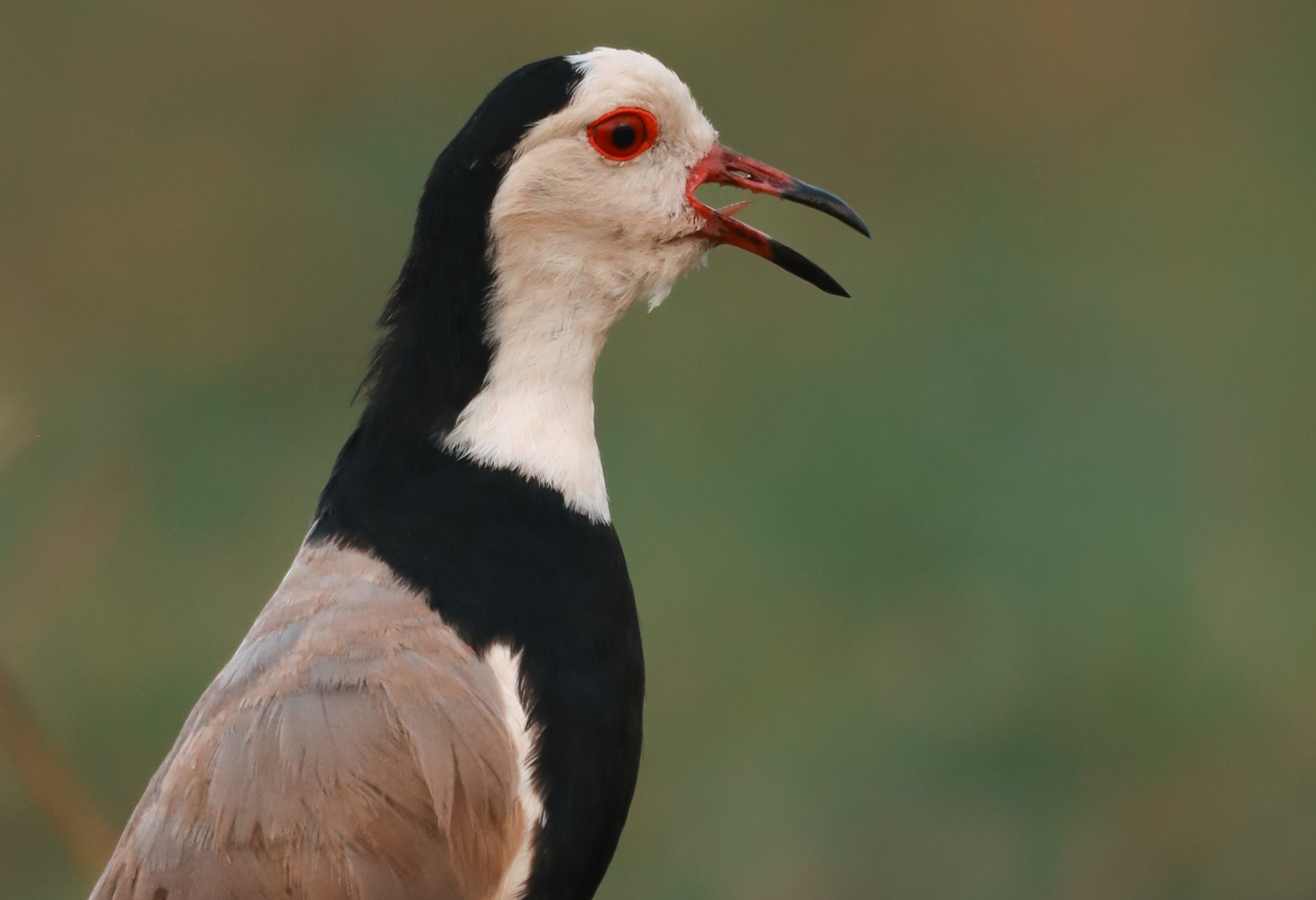
In the open grasslands and wetlands of Chobe National Park, the Long-toed Lapwing stands out with its striking black and white plumage. This captivating bird showcases its long, slender toes as it tiptoes delicately across the marshy terrain, searching for insects and small aquatic creatures to feast upon. Its melodious calls ring out across the savannah, adding a melodic touch to the vibrant ecosystem of the park.
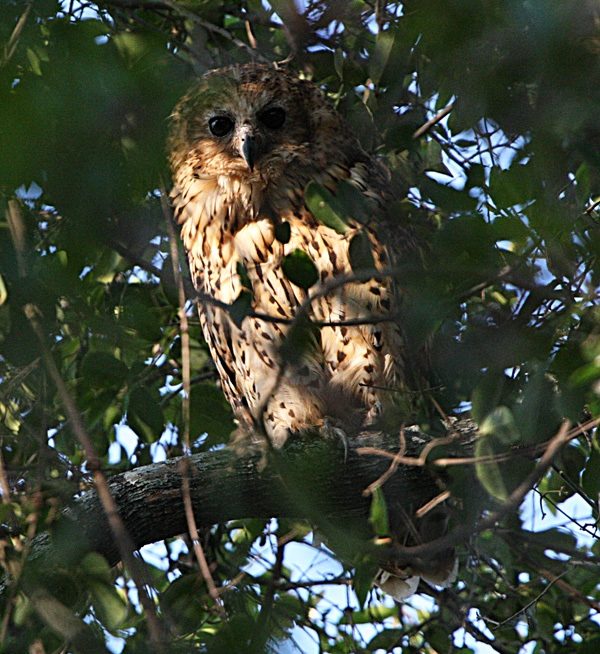
A nocturnal marvel, the Pel’s Fishing Owl is a highly sought-after species for birders. With its large orange eyes and striking appearance, spotting one perched on a tree during a night safari is a truly magical experience that will leave you in awe of the Chobe’s diverse avian life. The hoot of this magnificent owl resonating through the darkened riverine forests creates an ethereal atmosphere, evoking a sense of wonder and appreciation for the park’s untamed beauty.
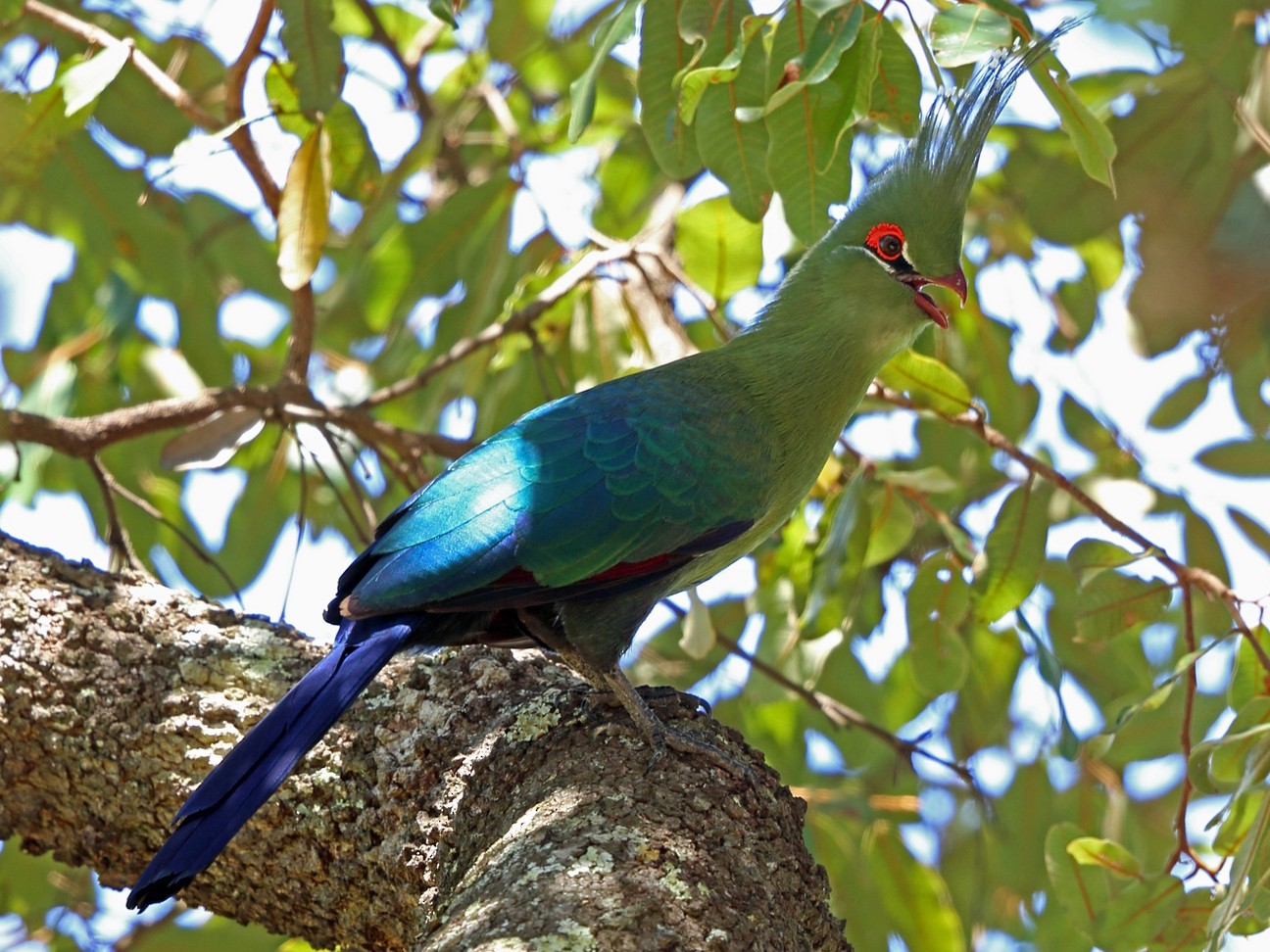
The vibrant Schalow’s Turaco is a birdwatcher’s delight, displaying a flamboyant combination of green, red, and white feathers. Often found hopping among treetops, this elusive species will add a pop of colour to your birding checklist. Patient observers may be rewarded with the enchanting sight of a turaco perched amidst the foliage, its iridescent plumage reflecting the dappled sunlight, symbolizing the park’s vibrant and lush habitats.
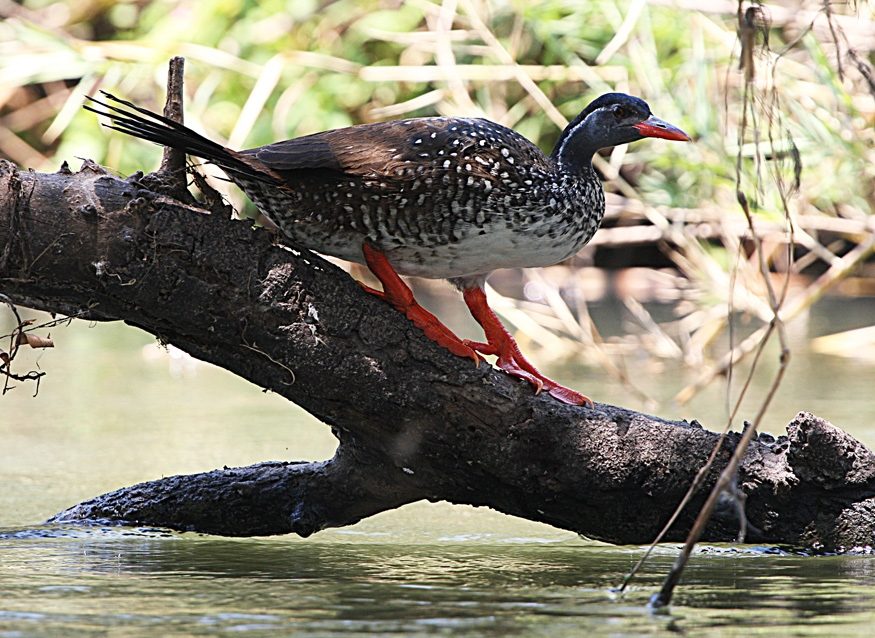
Considered a hidden gem of the Chobe River, the African Finfoot is a master of disguise. With its cryptic plumage and shy behaviour, it can be quite challenging to spot. However, patient birders will be rewarded with a glimpse of this peculiar bird gliding effortlessly through the water.
Catching sight of the finfoot’s distinctive black and white striped neck and its remarkable aquatic adaptations is a rare and cherished experience for all birdwatchers.
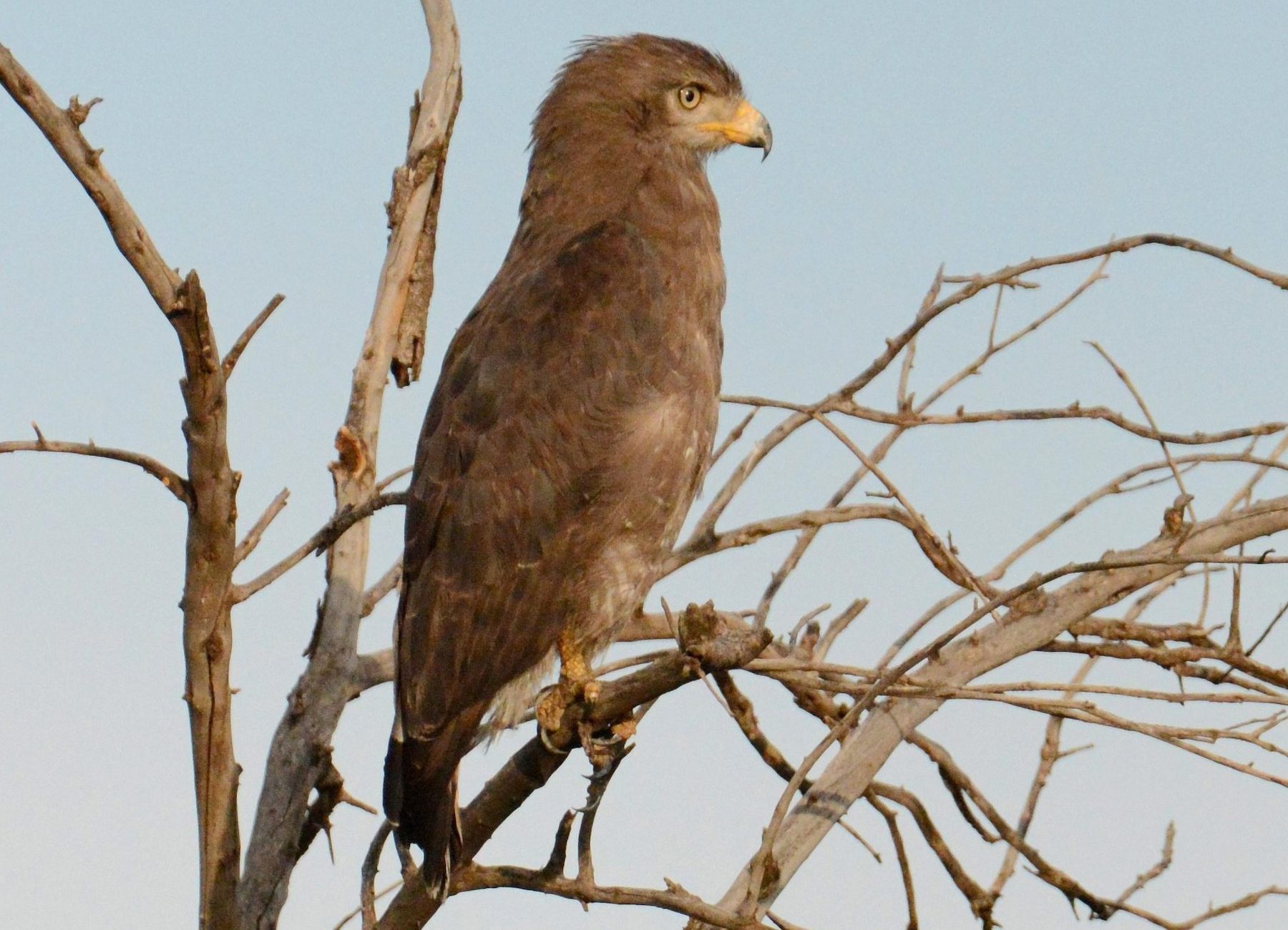
The Chobe region provides a habitat for several raptor species, including the Western Banded Snake Eagle. With its keen eyesight, it soars high above the savannah, seeking out snakes and small mammals. Observing this eagle in action is a highlight of any birding safari. Its majestic flight and powerful presence remind us of the delicate balance of predator and prey in this vast wilderness, showcasing raptors’ essential role in maintaining the park’s ecological harmony.
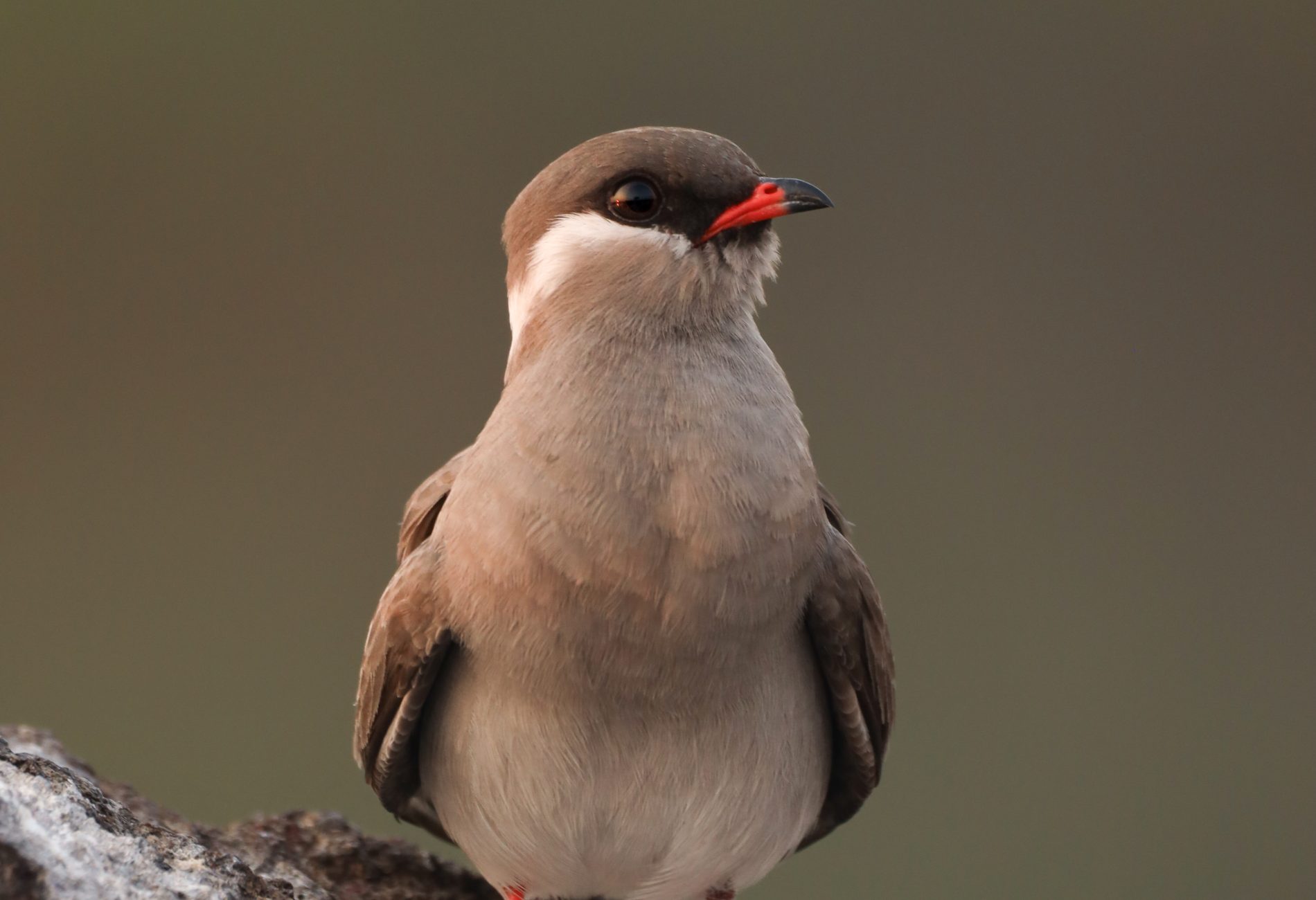
Migrating all the way from Europe, the Rock Pratincole finds its summer home along the Chobe River. Perched on rocks, these dainty birds gracefully dart across the water’s edge, their presence adding an exotic touch to your birdwatching adventure. You’ll enjoy the synchronized movement of these agile birds as they forage for insects above the river’s surface.
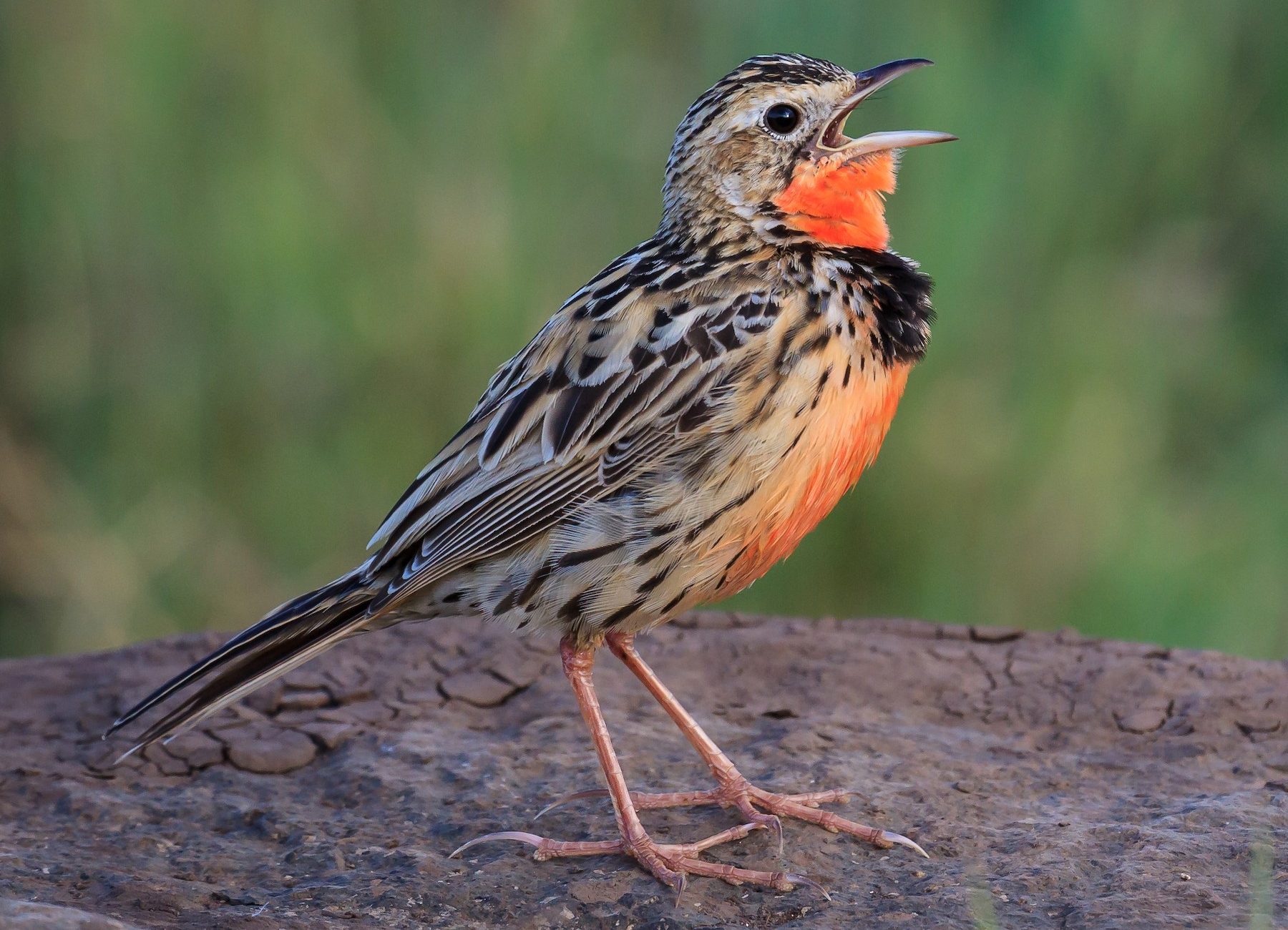
Chobe National Park welcomes birdwatchers with the delightful sight of the Rosy-throated Longclaw, a small but eye-catching passerine. Its golden-yellow body and a distinctly rosy hue on its throat create a beautiful contrast against the lush green backdrop of the park’s grasslands. This charming bird can be seen hopping and foraging amidst the vegetation, occasionally perching atop a blade of grass to sing its sweet and melodious song, adding a touch of brightness and cheer to the park’s avian population.
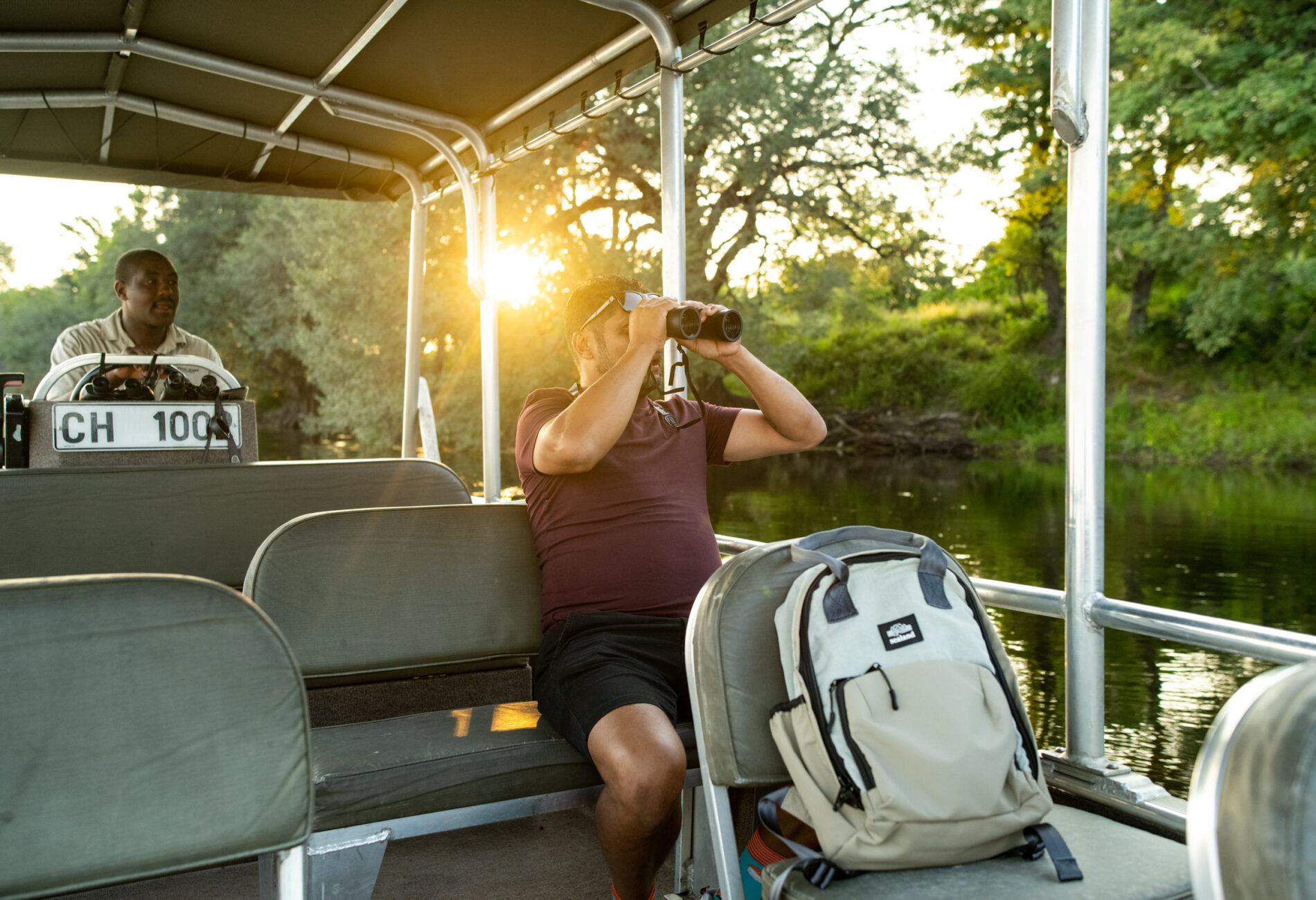
The Zambezi Queen Collection offers the ultimate gateway to an unforgettable birding safari, with September marking the season’s vibrant awakening as the region welcomes the first migrants, causing the bird population to surge by an astonishing 20% compared to the winter months.
Whether you opt for the Zambezi Queen, one of the Chobe Princesses, or the tented Ichingo Chobe River Lodge, rest assured that a knowledgeable guide will be by your side, ensuring an enriching birdwatching experience. Glide through the water on a tender boat, granting you exclusive access to a world of avian wonders.
The Zambezi Queen and Chobe Princesses boast boutique accommodations and breathtaking panoramic views, providing unparalleled vantage points to observe the remarkable waterfowl species that frequent the area.
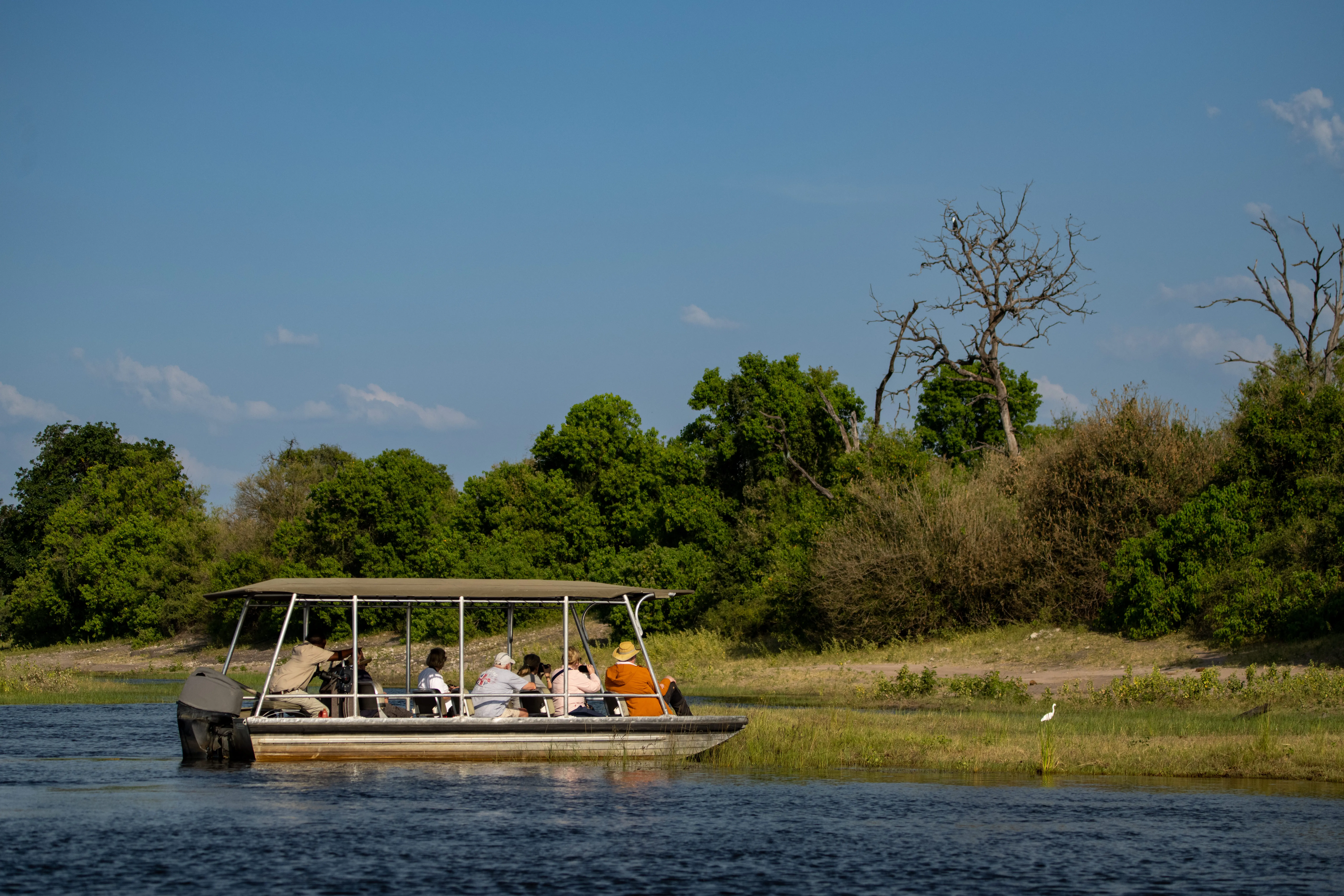
Meanwhile, the Ichingo Chobe River Lodge offers a unique blend of water-based and land-based bird-viewing opportunities, allowing you to explore both by boat and on foot or by vehicle. With this diverse range of options, you’re bound to witness an astonishing array of birdlife in its natural splendour.
Keen photographers and birdwatchers will also be delighted to enjoy a photographic safari. As a guest on board the luxurious Zambezi Queen, one of her three Chobe Princesses or at the tented Ichingo Chobe River Lodge means you’ll have access to our custom-designed photographic safari boats that cater for 6 clients in individual photographic seats.
Read more about our photographic safaris here.
Book your stay at one of the Zambezi Queen Collection properties today, and be captivated by the rich tapestry of African birdlife that surrounds you, providing a front-row seat to nature’s magnificent show.
Browse our special offers and contact us today.
